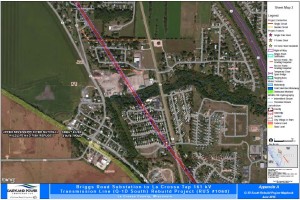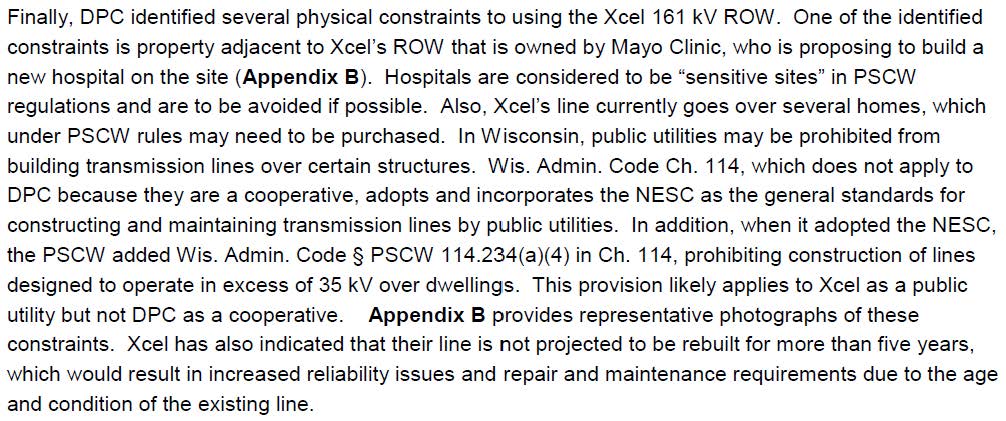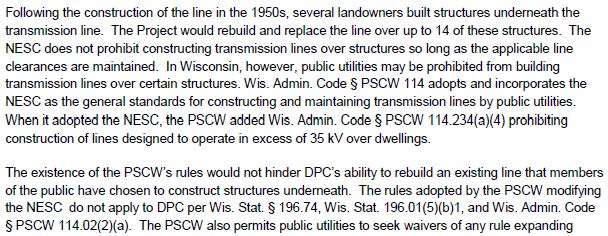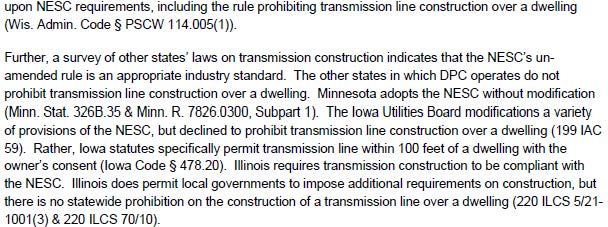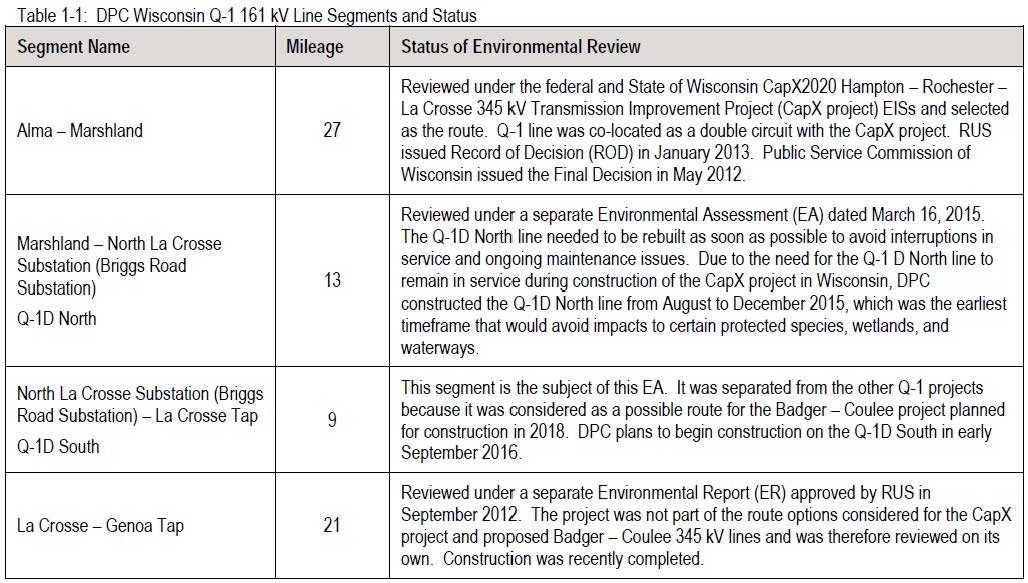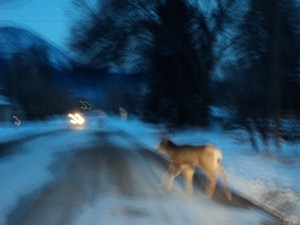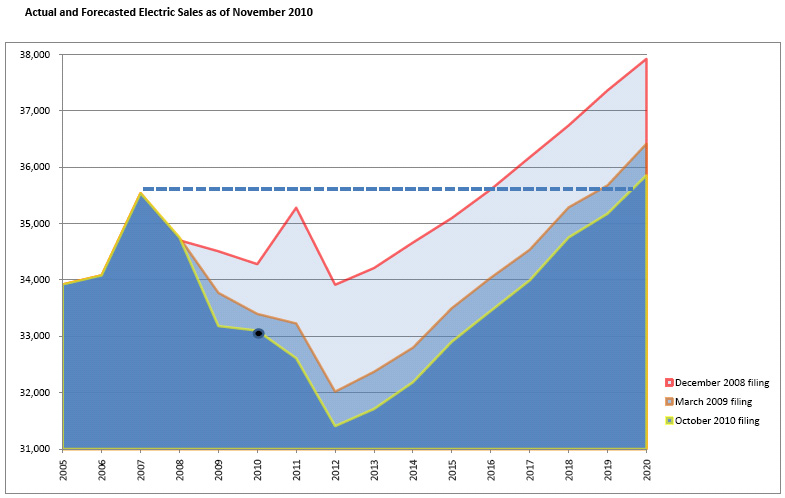RUS EIS is released for Cardinal-Hickory Creek Transmission
December 3rd, 2018
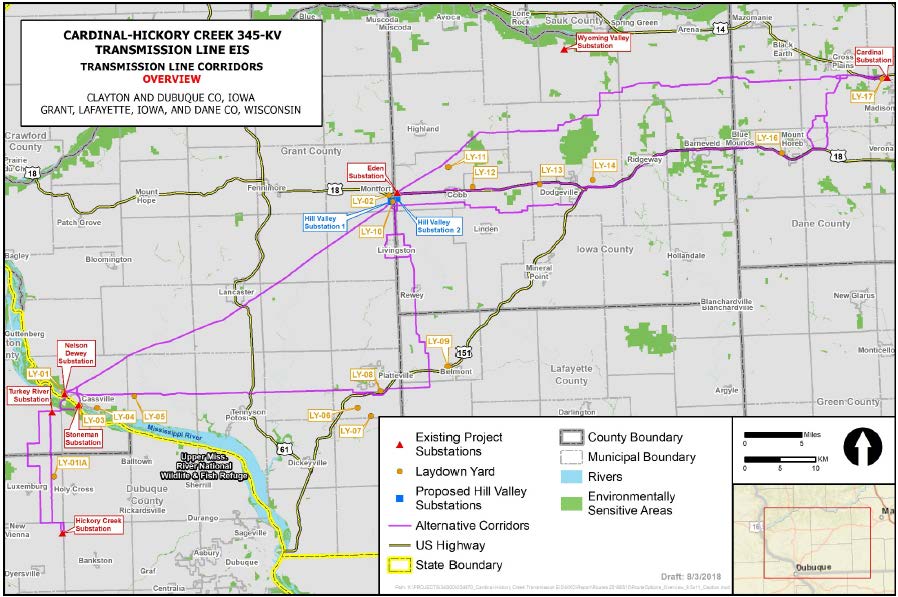
It’s out, the USDA’s RUS EIS for Cardinal-Hickory Creek transmission project:
Draft Environmental Impact Statement – November 2018
From the RUS Notice, how to send in comments and list of public meetings:
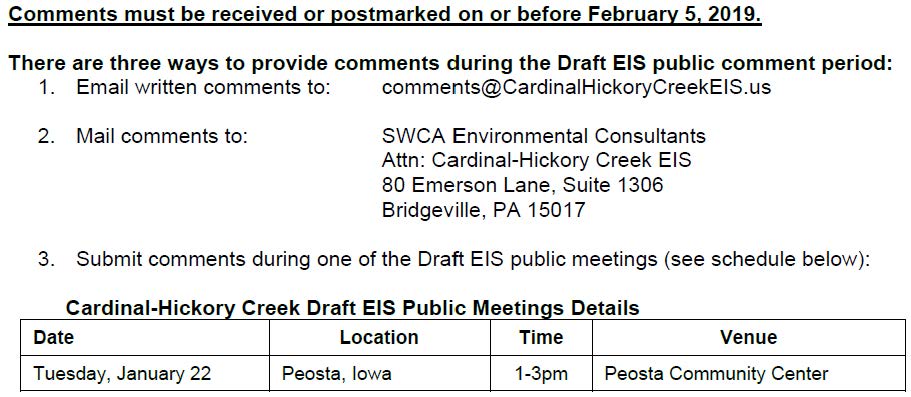

LTE in Dodgeville Chronicle
December 8th, 2016
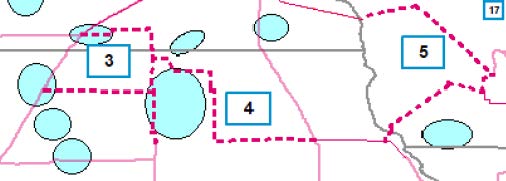
See the lower 1/2 of MISO’s MVP project 5, running from near Dubuque, IA to the northeast to the “Cardinal” substation near Madison? That’s the Cardinal – Hickory Creek transmission line.
The Dodgeville Chronicle ran my Letter to the Editor, just in time for the meeting last night, held by Rural Utilities Service, about the Cardinal – Hickory Creek transmission project:
Carol A. Overland, Esq.
Red Wing, MN
Comments filed on Dairyland Q-1
July 1st, 2016
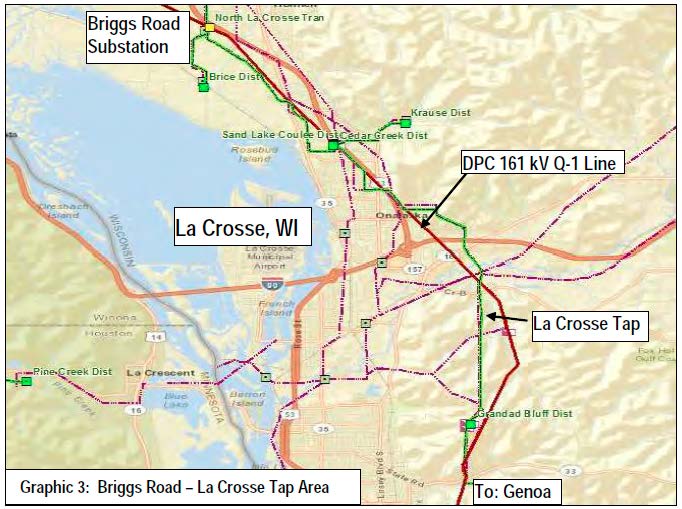
Time for a nap. Just filed Comments on the USDA RUS’s Environmental Assessment for Dairyland’s Q-1 D South transmission line. Here’s the EA:
And here are the Comments I filed on behalf of No CapX 2020:
zzzzzzzzzzzzzzzzzzzzzzzzzzzzzzzzzzz
Oh, and the interesting thing is that just this morning, I got a copy of the “Briggs Road-La Crosse Tap 161 kV Rebuild Study” Thank you, Chuck Thompson!
Dairyland’s Q-1D South Environmental Assessment
June 19th, 2016
Dairyland Power Cooperative’s transmission through Onalaska and La Crosse is something to see…
Dairyland Power Cooperative and USDA’s Rural Utilities Service has released the “Q-1D South” Environmental Assessment, open for Comment until July 1, 2016:
And from Dairyland’s site:
Briggs Road to La Crosse Tap (Q-1D South) – Environmental Assessment
Comments are due July 1, 2016 — send to:
USDA’s Dennis Rankin: dennis.rankin@wdc.usda.gov
(I’d also cc DPC’s Chuck Thompson: cat@dairynet.com)
By U.S. Mail:
Dennis Rankin
Environmental Protection Specialist
USDA Rural Utilities Service
1400 Independence Avenue S.W.
Mailstop 1571, Room 2242
Washington, DC 20250-1571
What’s to comment on? I see two issues that should be sufficient to stop this project in its tracks — the debt load of Dairyland Power Cooperative and the physical setting of the project which too near and right over people’s homes.
Debt load — Dairyland Power Cooperative’s debt is excessive and should prohibit taking on more debt:
Dairyland Power Cooperative’s Annual Meeting was last week. One purpose of an organization’s Annual Meeting is to discuss its financial status and approve plans going forward.
Dairyland depends on federal USDA/RUS loans to pay for its transmission expansion, such as the Q-1 transmission upgrades, including Marshland-Briggs Road and now the stretch from Briggs Road to North La Crosse south of I-90. Another USDA/RUS loan paid for Dairyland’s share of the CapX La Crosse line now blighting the bluffs. Dairyland will also be part owner of the MISO Hickory Creek to Cardinal line from Iowa to Madison. That’s a lot of transmission and loans.
Dairyland recognized this financial risk and lopsided debt/equity position, and in 2012 sought help from FERC_(DPC_Request4DeclaratoryOrder), requesting a hypothetical capital structure of 35 percent equity and 65 percent debt when its actual capital structure was 16.5 percent equity and 83.5 percent debt, and FERC did grant this relief in an Order for DPC for CapX 2020 (see FERC Docket, go HERE and plug in docket EL13-19-000). That Order, and the 83.5/16.5% debt/equity ratio was prior to the present Q-1 D South project and the MISO MVP Hickory Creek to Cardinal transmission line. Dairyland requested a “hypothetical” (bogus) debt/equity ratio to preserve its credit rating and enable low cost loans. The true debt level makes DPC a higher risk.
Are Dairyland members aware of the 83.5%/16.5 % debt/equity ratio and reliance on loans for major transmission projects? What’s the debt level where new projects are included? This new transmission enables increased power marketing and sales, a private purpose. Is this highly leveraged position for new transmission in the best interests of Cooperative members?
Physical setting of the project — it’s just too close!
The map way above is what the transmission system in the area looks like theoretically, according to the Wisconsin Public Service Commission, but here’s what Dairyland’s Q-1 South line looks like on the ground:
Really… Here’s what it looks like from a satellite with the lines drawn in, on the far south:
Here’s what it looks like further north — look at all those homes:
And here’s what the Wisconsin PSC Code says about clearances in PSCW 114.234:
(2) Transmission lines over dwelling units. [Follows NESC 234C1b, p. 119] (Addition) Add the following paragraph c:c. Transmission lines over dwelling units.No utility may construct conductors of supply lines designed to operate at voltages in excess of 35 kV over any portion of a dwelling unit. This provision also applies to line conductors in their wind-displaced position as defined in Rule 234A2.Note: It is the intent under s. SPS 316.225(6) that the public not construct any portion of a dwelling unit under such lines.Note: The term “dwelling unit” has the meaning given in ch. SPS 316, which adopts by reference the definitions in NEC-2008.Note: See s. SPS 316.225(6) Clearance Over Buildings and Other Structures, which refers to ch. PSC 114 regarding clearance of conductors over 600 volts and the prohibition of dwellings under or near overhead lines.
USDA’s Dennis Rankin: dennis.rankin@wdc.usda.gov
(I’d also cc DPC’s Chuck Thompson: cat@dairynet.com)
By U.S. Mail:
Dennis Rankin
Environmental Protection Specialist
USDA Rural Utilities Service
1400 Independence Avenue S.W.
Mailstop 1571, Room 2242
Washington, DC 20250-1571
Transmission from La Veta, Colorado
January 12th, 2011
Above is my view of La Veta, Colorado. As I drove in, I saw two deer sauntering, yes, SAUNTERING across a farm field at the edge of town. And in town, they were just walking around like they owned the place, fat and happy. This one above was a buck escorting two of his does, maybe one and last year’s progeny, and they were walking down the streets, through yards, hanging out oh-so-casual.
There are some days, well, most days, I confess, when I really love my job… yesterday was another!
Yesterday was a forum held by TLC, Transmission Line Coalition, last night in La Veta and tonight in Alamosa:
Here’s some of what I had to say:
Xcel, of course, was there, and I’m sure they’ll be there tonight!
Here’s the ALJ Recommendation, this will sound very familiar to those in Minnesota:
As we say in transmission, “IT’S ALL CONNECTED.”
(Pretend there’s a link here to USDA’s RUS EIS page – it’s DOWN DOWN DOWN) NEVERMIND, it’s now UP UP UP! From RUS (note this San Luis project is about 4 months behind Dairyland/Capx:
Tri-State Generation and Transmission
San Luis Valley-Calumet-Comanche Transmission Project – Huerfona, Alamosa and Pueblo Counties, CO – The agency has decided to prepare an Environmental Impact Statement on this proposal; the original level-of-review was an Environmental Assessment.
- Federal Register Notice to hold Scoping Meeting and the intent to prepare an Environmental Assessment (August 3, 2009 – 47 KB)
- Calumet-Comanche Electric System Improvement Project – Macro Corridor Study (May 2009 – 24 MB MB)
- San Luis Valley-Calumet-Comanche Transmission Project – Alternatives Evaluation (June 2009 – 510 KB)
- San Luis Valley Electric System Improvement Project – Alternatives Evaluation and Macro Corridor Study (June 2008 – 14.2 MB)
- Public Scoping Report (November 16, 2009 – 28.6 MB)
What I want to know is WHY they are using lower capacity ACSR conductor for these projects — and the claimed “need” is SO low, why aren’t they just reconductoring the whole system — ACSR, euwwww, that is SO 1960s:
And demand forecasts? Need a good laugh? Here’s the sales forecast for Public Service of Colorado, our good friends at Xcel:
I’ve just learned that this area is mushroom country — methinks that this “forecaster” has been dabbling in some of the more exotic varieties to come up with this chart!
![Ulman_St[1]](https://legalectric.org/f/2016/06/Ulman_St1-224x300.jpg)

